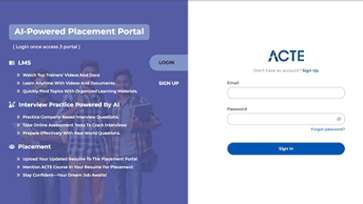ACTE is the top Web Designing Course in Mumbai. In this course one may get the best instruction for web design. Neither our curriculum nor our slogan are like those of other schools. A unique training method will be used to train the pupils in a way that will be useful to them in real-time. With more than 10 years of expertise in web design and development training, our teachers will guide you from start to finish. They will guide you from start to finish. They made the greatest web design and development training course uncomplicated and simple. We use the latest technologies and techniques to help students understand and succeed in their careers.
Additional Info
Why Web Designing?
There are many opportunities in web designing in the present and in the future. A web page is a piece of information posted on the internet. There is a great scope in IT industry and all other technologies related to the internet for people who specialize in web design. In today's world of the internet, a web designer has many opportunities. Web designers now have more job opportunities than before. There is a high demand for freshers and experienced candidates in many big companies.
Six Web Design Features:
1. Quality Web Content:-
Search engines and websites are largely used for information searches, the most common reason people use them. People desire information everyday, and want if delivered in a fast and reliable fashion. If search engine optimization is part of a website's overall marketing strategy, superior content is a must, whether it's to entertain, entice, or educate visitors. Business websites should provide relevant content along with important information. Sites for retail products, for example, require high quality images, whereas those for consulting firms tend to highlight client testimonials. It is also a best practice for most search engine optimization experts to make sure the most relevant content appears prominently on the website.
2. Clear, User-friendly Navigation:-
The navigation scheme of a stellar website should allow users to easily locate the information they need. Link labels are easily understandable and should include logical, simple, and clear explanations. On the navigation's scheme, calls to action are prominently displayed. The search box is suggested when a site has a large amount of content to make it easier to locate particular pages within the site.
3. Simple and Professional Web Design:-
It is easy to see why bells and whistles seem nice in concept, but they rarely add much to a website that is effectively constructed and sensible. A website that converts visitors into buyers typically maintains a neat and simple layout, while maintaining an attractive design. An excellent example of a site like this is Google. User testing of Google's initial design revealed that it was overly simplified. For the purpose of keeping the interface simple but preventing a site from appearing haphazardly constructed, Google added the 'I'm Feeling Lucky' button underneath the search box. This button rarely gets clicked, but its introduction improves the user experience because it balances the layout. The use of slightly contrasting colors and clear fonts is key to keeping websites simple, without looking bland like Google's home page. Visitors' eyes will strain if color contrast is overt, or fonts are overly small, and blocky blocks of text are not sufficiently broken up with images. Avoid using colors that are bright and bold.
4. Webpage Speed:-
The human brain naturally loses patience quickly, and this applies to online visitors as well. It is more likely that a user will leave a website before it has fully rendered the page if it takes too long to load. In the case of slow loading, beautiful graphics and substantial content become completely irrelevant. Site speed can be influenced by several factors, such as the number of graphics, server speed, and website traffic. In order to optimise a client's website, the web design company should make sure that all controllable factors that slow down the site are minimised.
5. Search Engine Optimisation:-
An SEO-optimized website usually receives many visitors, and one way to attract visitors is by designing a good website. Content on your website needs to contain search terms, a link profile with appropriate anchor text, and over 200 other factors. We have created a search engine optimisation resources section just like our resources section for website design.
6. Web Compatibility:-
As one can now view web design on a number of browsers and platforms, the variety presents a challenge to developers. However, talented developers are used to handling such a variety of factors. As mobile devices become increasingly popular, websites should be able to display correctly on a variety of different screen sizes, resolutions, and browsers.
Remember that not everything that glitters is gold when it comes to web design. Knowing what it takes to create a well-built website will enable you to quickly attract and retain customers.
What does a web designer do?
Web designers are responsible for the layout and design of a website. Website development may refer to the creation of a new site or the updating of an existing site. A web designer's role is distinct from that of a web developer, who specializes in making web designs a reality or writing code that explains how different parts of the website fit together. There can, however, be crossover between the two roles.
Responsibilities of the job include:
Creating web designs
The production of sample sites
Discussion of project requirements or progress with clients
Reviewing draft sites and getting feedback
Updating your knowledge of recent technological developments and software
Developing a deep understanding of appropriate software and programming languages such as HTML and Javascript
The creation of products that are effective, appealing, and easy to use
Editing and retouching of digital images
Participating in multidisciplinary teams
Meeting deadlines may require some additional hours due to the pressure.
Professional Skills of Web Designers:
On the other hand, from the perspective of professional skills, web designers must possess the following skills:
1. Design Tool:-
Craftsmen always have a set of tools at their disposal. Web designers need to use a variety of essential design software programs, as described in the job descriptions above. Web designers can now create websites through a web browser, but image processing, icon design, and prototyping tools such as Photoshop, Sketch, and Mockplus still provide substantial benefits. Your work will be more effective if you use the right tools at the right time.
2. Design Sense:-
Web designers should have a good sense of design. A good-looking website is just one aspect of web design. Design elements such as typesets, images, and basic design principles, such as layouts, forms and more, must be understood.
3. User Experience Design:-
UX stands for user experience, or the way people feel while using a site. Creating user personas and using sitemaps for layout will give you a great UX. Understanding what the user is doing during a visit to the site can help you improve your site. Testing can improve the design of a website, improving user experience and increasing conversions.
4. Responsive Design:-
More and more people are viewing and reading web page information on small screens due to the proliferation of smartphones, tablets, and other mobile devices. A responsive web designer is responsible for making sure that their web pages are readable on small screens.
5. Graphic Design:-
Graphic design and web design are two different things. Having graphic design skills will make you more marketable if you are a web designer.
6. Adobe Animate:-
An animated web page can make a dull one dynamic. Your website will be more appealing if you use an appropriate animation. An animation is particularly important for websites that represent name-brand clothing, cars, films, and television. It will be easier for brands to be identified and recognized with visual impact.
Web Designer’s Technical Skills:
Since web development technology is rapidly developing, the requirement for web designers is increasing. Understanding the necessary web development language will also benefit you in the long run, in addition to being proficient in professional skills.
1. HTML:-
Though a Web designer might not think they need to master HTML, anyone should know basic HTML/CSS, regardless of their role. Your reading, editing, and problem-solving abilities will improve. In actuality, the level and scope of knowledge a designer/developer needs may be even broader depending on whatever you do. Whatever the case may be, it is imperative that you understand how styles and colors are controlled by code. The skills acquired by these individuals can be extremely useful in the future.
2. CSS:-
A website's structure and style are built on CSS and HTML, the two building blocks of website design. A site's HTML structure determines its visual appearance, and CSS determines the structure. Using CSS, you can add stunning backgrounds, change fonts, and adjust colors.
3. JavaScript:-
By learning JavaScript, you can enhance your ability to write design code in HTML and CSS in order to make yourself more competitive. JavaScript can be helpful to web designers in solving problems on the job. StackOverflow also surveyed full stack developers and found that JS is the most popular programming language.
4. Web Server Management:-
There is no way to ignore the server issues when making a website, but they are inevitable. Understanding what a web server does and its basic features will enable you to solve problems faster, even if you are not a back-end expert.
Web Designer Salary & Job Outlook:
Among web designers, web developers earned 73,760 annually on average, according to a report from the U.S. Bureau of Labor Statistics. Based on the BLS, the job growth for web developers is projected at 8%. Compared to other jobs in the U.S., this rate is faster than average. According to the agency, graphic designers earned 52,110 on average. The BLS forecasts a 4% decline in job opportunities for this profession.































